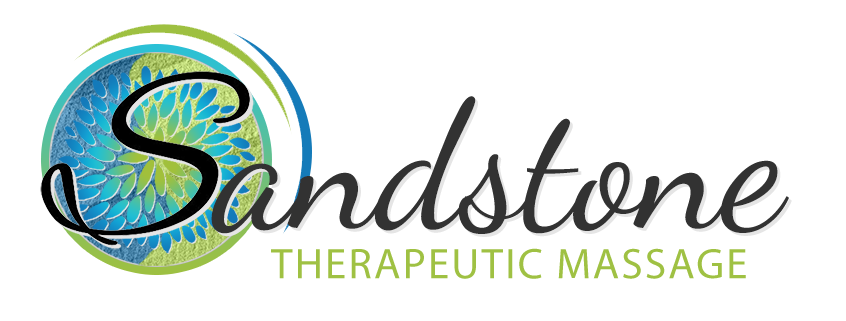The Healthy Home Blog – The Laundry Room & Closet
Today’s feature for The Healthy Home Blog is the Laundry Room and Closet areas. We’ll discuss the clothing we wear and how it can affect our health as well as how it’s laundered. Tips will be provided to help you make improvements for you and your family to better support your wellness.
The manufacturing of clothing is one of the environments’ biggest offenders. The manufacture of Calvin Klein jeans, Liz Claiborne skirts, Tommy Hilfiger shirts and Adidas shoes all affect the environment negatively, yet we need clothing for survival. Clothing provides warmth, a protective covering for the skin, (the largest organ of the body), and of course, fashion. We often reflect on the toxins in our food, water and air but forget that the very clothing on our bodies affects us, too.
The great chemical push started back in the 1930’s when corporations like DuPont and Dow began creating them. This began the advent of synthetic fibers used for clothing: rayon, polyester, acrylic, acetate and triacetate. These fibers are inexpensive and easy to produce. These days, most clothing is made in Third-World countries; some factories employing slave labor with few regulations on how and by whom the clothing is produced. The Environmental Protection Agency only tests chemicals after there is evidence they are harmful. Out of the more than 60,000 synthetic chemicals produced globally, the EPA has only restricted five.
Not only is clothing often made of synthetic fibers but even those made with natural fibers like cotton, are often sprayed with chemicals before shipping. Formaldehyde (a preservative and embalming agent), is sprayed on clothing to prevent wrinkling and mildewing during shipments. Formaldehyde can be absorbed through the skin, inhaled or ingested to have negative effects. The negative effects associated with formaldehyde include: classified as a carcinogen (cancer causing), High level, short-term exposure to formaldehyde can be fatal. Long-term exposure to low levels of formaldehyde may cause respiratory difficulty, eczema, fatigue, headache and sensitization. Investigations have uncovered up to 500 times the safe level of formaldehyde in clothing from factories in China and Southeast Asia.
According to Greenpeace.org regarding NPEs:
“Nonylphenol ethoxylates (NPEs) chemicals are used in the manufacture of clothing & other textiles. When released, either directly into surface waters or via wastewater treatment facilities, NPEs can break down to form nonylphenols, a group of persistent, bio accumulative and toxic chemicals. The use of NPEs during the manufacture of textiles can also leave residues of these chemicals within the final products. This study was carried out to improve understanding of the presence and levels of NPEs within textile products manufactured in and purchased from a wide range of countries, and representing a number of major clothing brands. The concentrations of NPEs were quantified in 78 articles (including sports and recreational clothing and shoes) purchased during April and May 2011 in 18 countries – including 10 within the EU – and representing 13 different countries of manufacture. For the majority of products (71 of 78), a section of plain fabric was analyzed, while for the 7 other products a section of fabric bearing a plastisol 1 print was used. Results demonstrate the widespread presence of NPEs within the textile products tested, across almost all countries of manufacture, countries of purchase and brands included in the study, indicating that the use of NPEs is widespread within the international textile industry, including within supply chains used by several major international clothing brands. Key findings • 52 (two-thirds) of the 78 articles tested positive for the presence of NPEs at concentrations above the limit of detection (1 mg/kg). • Where detected, levels of NPEs in plain fabric samples ranged from just above 1 mg/kg to 1100 mg/kg. Levels in samples bearing a plastisol print ranged from 5.0 mg/kg up to 27000 mg/kg, the latter being the highest concentrations among all samples. • NPEs were detected in products: – from 12 of the 13 countries of manufacture, the exception being one sample from Tunisia; – from 14 of the 15 product brands (the exception being two samples from GAP); and – purchased in 17 out of the 18 countries (the exception being two samples from Sweden)”. NPEs break down into a toxin with hormone-disrupting properties similar to bisphenol A (BPA), which has had much negative attention in recent years.
Wrinkle free and no-iron clothing are also of concern. They contain carcinogenic perfluorinated chemicals (PFCs). PFCs are also present in non-stick Teflon coated cookware. These chemicals are added to products to make them more resistant to stains, grease and water. Companies have incorporated PFCs into carpeting, furniture upholstery, clothing, food wrap, fast food containers, car seats, shoes, and tents. Name brand PFCs include: Gore-Tex, Formation, Texapore & Nanuck, to name a few. Surveys have shown that over 95% of Americans have concentrations of PFCs in their blood. Health issues associated with PFOS or PFOA (types of PFC’s) levels in the general population include reduced female fertility and sperm quality, reduced birth weight, attention deficit hyperactivity disorder (ADHD), increased total and non-HDL (bad) cholesterol levels and changes in thyroid hormone levels. In a highly exposed community living near a chemical plant, PFOS and PFOA have been associated with preeclampsia (pregnancy-induced hypertension), birth defects (PFOA only), and increased uric acid levels – a marker of heart disease. Occupationally-exposed workers may have increased risk of prostate and bladder cancer.
Clothing that is black in color is concerning. Black clothing and dyes for leathers often contain p-Phenylenediamine (PPD), which can produce allergic reactions. PPD is also found in darker shades of hair colorings.
Now that you have an idea of what is in your clothing, what do you do to protect yourself? It is recommended you wash brand-new clothing THREE times before wearing. Using a natural, unscented laundry soap is necessary. No sense in trying to wash out chemicals while at the same time, using chemicals to launder! Avoid dryer sheets in the dryer as they contain a variety of chemicals (including formaldehyde), that may cause irritation and sensitivities. An alternative is to use essential oils. A few drops of your favorite essential oil on a cotton ball in the dryer will leave a pleasant scent. Another way to help the environment is to purchase second-hand clothing from garage sales, thrift stores and consignment stores. This encourages reduced manufacturing of clothing. Keep in mind that thrift stores sometimes spray chemicals on clothing before putting it out on the rack. Second-hand clothing from thrift stores should always be washed before wearing.
Here’s a simple home-made laundry soap from DrAxe.com:
Homemade Laundry Soap
Total Time: 5 minutes
Serves: 12-15
INGREDIENTS:
- 1 bar grated castile soap
- 2 cups washing soda
- 1 cup baking soda
- 15 drops lavender essential oil
- 15 drops peppermint essential oil
Directions:
- Combine all ingredients and store in an airtight container.
- Use 1/4 cup per large load (adjust accordingly, especially for high-efficiency washers, for which you may want to wait until the water runs through the soap dispenser).
Want to know what’s in your new clothes?
“Wrinkle free” or “no-iron” labeling should be considered a warning for carcinogenic perfluorinated chemicals (PFCs). Teflon used in cookware is a PFC, too. According to the EPA, Perfluorinated chemicals is a term that some scientists use to refer to the group of toxic chemicals that includes PFOA and PFOS and other per- and polyfluoroalkyl substances (PFASs). Organizations that have used the abbreviation “PFCs”, referring to perfluorinated chemicals, include U.S. EPA, U.S. Centers for Disease Control and Prevention (CDC) and the U.N. Organization for Economic Cooperation and Development. EPA is now trying to use “per- and polyfluoroalkyl substances (PFASs)” rather than “perfluorinated chemicals (PFCs)” consistently to collectively describe PFOA, PFOS and the other chemicals in this group. Here in Michigan, you may have heard the controversy with PFASs in the Huron River that supplies drinking water to 85% of Ann Arbor. Contamination of the Huron River has also led to a ‘no eat’ fishing policy because the levels of the PFC’s or PFASs are elevated. You may see the PFASs in the water as it collects as a foam on the water’s edge. According to the Center for Health, Environment & Justice, Human exposure to PFCs primarily comes from drinking water, fish consumption and breast milk. PFCs build up and remain in the body for years. It takes about 4 years for half the level in the body to leave which occurs mostly through urination. As a result of its long half-life in people, PFCs have the opportunity to bioaccumulate, which in turn increases its potential to adversely affect people’s health. PFC health risks include impaired liver, hormone & immune system function as well as kidney and testicular cancers. It’s also related to hypertension in pregnant women and lower birth weights in infants.
Learn to protect yourself by reading clothing labels before you buy and try to avoid synthetic materials such as Rayon, Nylon, Polyester, Acrylic, Acetate or Triacetate as much as possible. Even if you wash them, they are not safe. Their fibers break down as you wear the clothes and release their toxic residues directly on your skin. The fibers can also be breathed in. Be sure to avoid anything that says it is no-iron, wrinkle free or preshrunk.
If you must buy clothing so labeled, wash and dry those clothes three times before wearing. Use only safe, organic detergents from health food stores. Avoid those dryer sheets sold in conventional stores to reduce clinging. They are loaded with toxic chemicals and especially toxic chemical fragrances.
It may seem like buying used clothes would be a better way to go, but used clothing purchased from thrift stores such as Goodwill or that you buy on ebay may be sprayed with chemicals before they’re put up for sale. Wash and dry them at least once.
You may have some clothing in your closet that states “Dry Clean Only”. Traditional dry cleaning processes are toxic. Stay away from dry cleaners that use perchloroethylene; 85% of dry cleaners use it. Some communities, as in Minneapolis Minnesota, have banned the use of perchloroethylene, or “perc.” Both the EPA and the National Academy of Sciences classifies perc as a “likely human carcinogen.” It’s also a pervasive pollutant that is found in the air, in drinking water, soil, people’s blood and breast milk. The EPA says that perc can damage the brain and nervous system, as well as cause cancer. Additional consequences of exposure to perc include dizziness, drowsiness and loss of coordination; mild loss of memory, visual perception, and reaction time after several years of exposure; and redness and blistering of the skin after prolonged contact. Those who work in the dry-cleaning businesses are at high risk due to exposure.
You may see “green” or “organic” dry cleaning services advertised but according to the Environmental Working Group, there are no standards to determine what that is. Is it better for you and the environment? Possibly, but there’s no baseline for the green/organic standard at this time. The best course of action is to not purchase items that require dry cleaning or to gently hand wash the items to the best of your ability. Know that some fabrics will not tolerate this method. Jackets and coats that are dry clean only do not need cleaning after each wear; simply have them dry cleaned minimally.
The next time you visit the store to pick up laundry detergent, choose unscented, natural detergents and skip the dryer sheets. Consider making your own laundry detergent at home. Read clothing labels keeping in mind the chemicals used in the manufacturing process (remember that black garments, shoes, belts and handbags are the bigger offenders). Avoid dry cleaning if you can. Here’s to a healthier, happier home!


